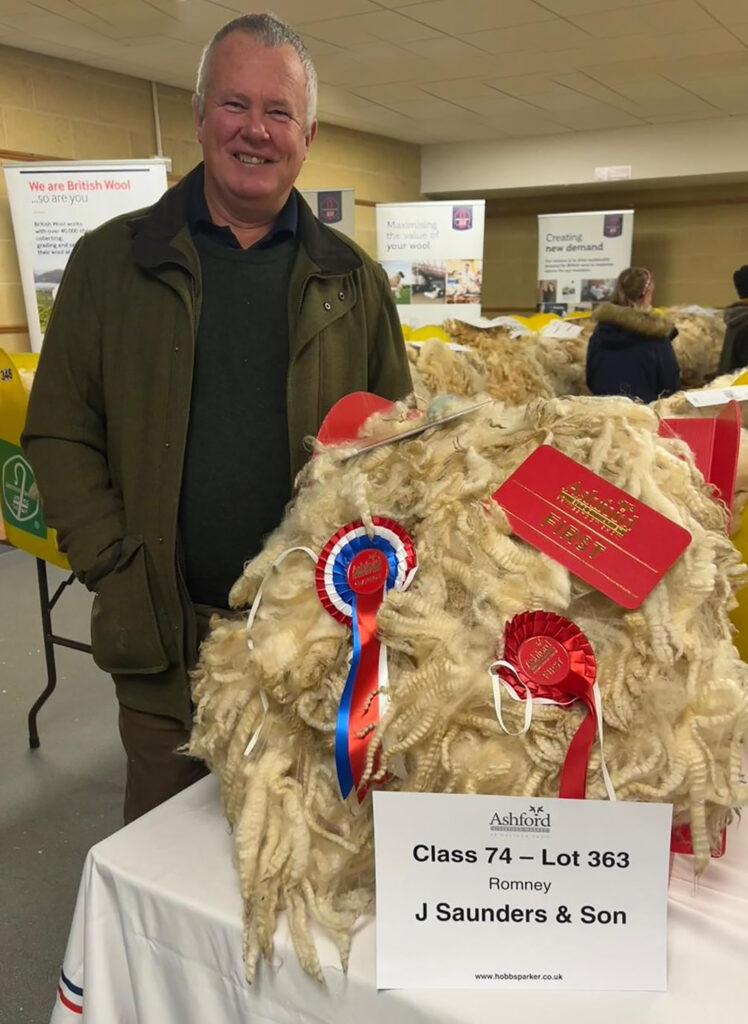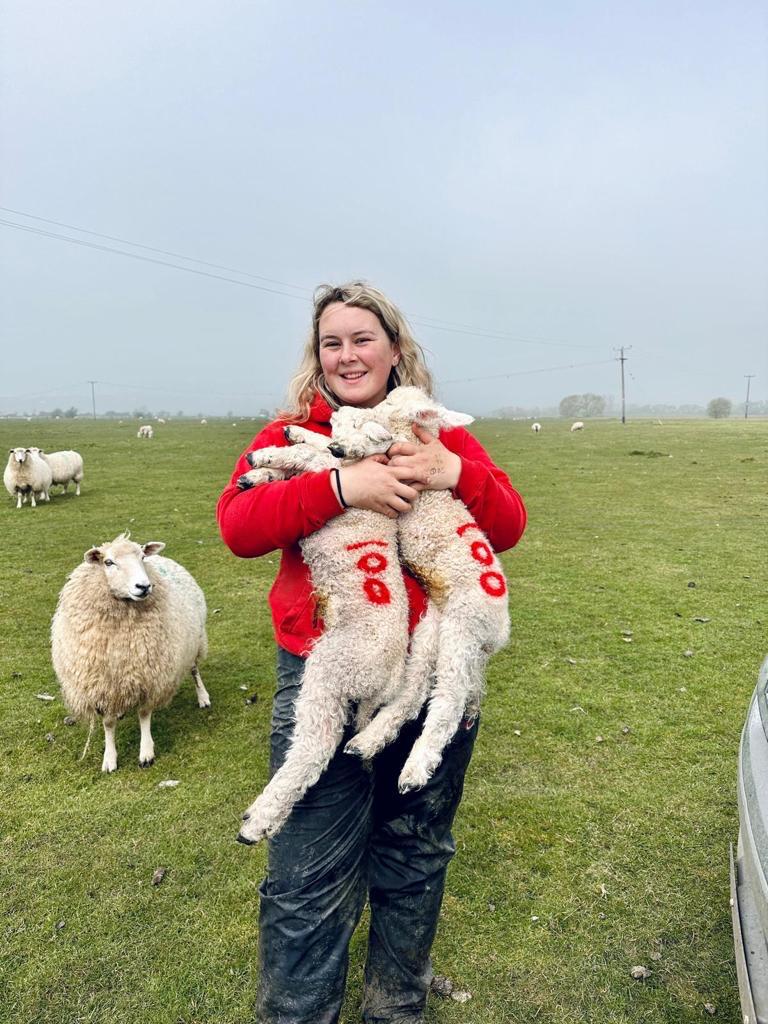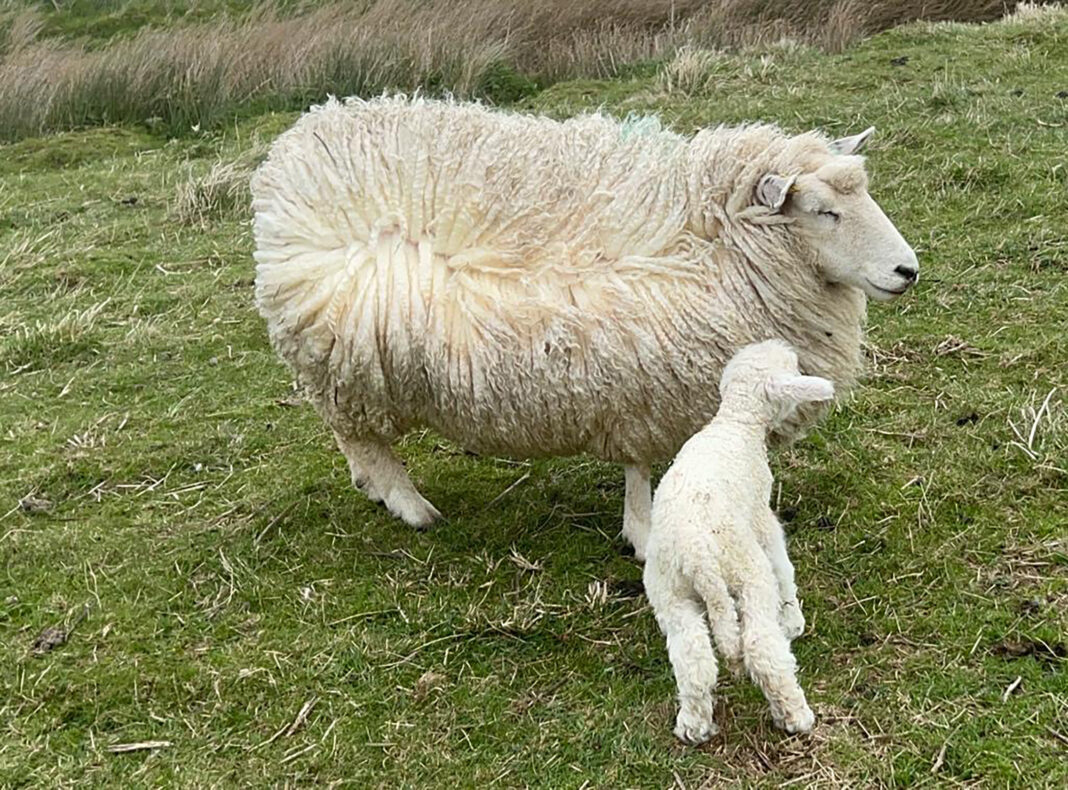Local shepherd Tony Pierce has been flying the flag for #britishwool at Ashford Fatstock show, winning top award for his champion fleece. The Livestock Marketing at Ashford Market is the South East’s largest auction market.
The Ashford Fat Stock show is the end of year get-together for local farmers who show off their ‘fat’ animals ready for people’s Christmas dinners. These animals have been cossetted and looked after by local young farmers clubs and high-class breeders who will get their animals looking their best and then take them off to market. These breeders are looking to showcase these animals and the winner’s certificates will be hung in pride of place in the butchers where the meat is sold.
Tony only had wool at the show this year and won.

He said, “This helps my breeding programme because when I come to sell ewes or rams next year farmers will say, ‘He won the competition again’ so they want to buy into our stock. The wool is a minimal percentage of our income but it is good in my eyes”.
How many farmers would you have been competing against?
There were probably forty fleeces in the competition. Everyone has their sheep shorn and it is sent into Ashford and that is where they grade all the wool. Every single fleece is looked at by a wool-grader who has taken a course for five years to be able to carry out this task. They pull it to check the wool’s quality, the colour of it, the crimp and staple length, the lack of vegetation and check it is as clean as possible. The fleeces are then ranked from winner down and mine came first again.
There are two competitions, one for ewes and one for tegs, (teg is the name for a young sheep between the January after its birth and its first two teeth, probably eighteen months old). There are champion ewe fleeces, champion teg fleeces and champion all-comers. My sheep are Romney wool but there are other breeds too, but Ashford mainly deals with Romneys. I won the overall winner of all the competitions and it is great to retain the title for the second year running.
What other competitions have you won?
I came third in the Romney Sheep Breeders Society flock competition this year, won it last year and the year before that I came third as well. You are judged in two categories, a flock under 300 or a flock over 300: I have 1,200 ewes. The judges come out to the farm to assess them. It’s all in the eye of the beholder on the day. The weather didn’t help as it was lashing with rain on the day of their visit which does not enhance the look of the sheep.
Are there any other awards that you would like to win?
Not really; I haven’t gone into competitions in a big way. There is a Romney Marsh sheep Facebook page with mainly farmers of small flocks in the States and in New Zealand. I put my winning fleece and the ewe that it came from on the page and many of them would love to get the genetics of that sheep over there.
How long have you been a shepherd on the Marsh?
Far too long – about forty-five years. It’s in my DNA. My daughter Faye is in New Zealand having completed her three-year diploma in agriculture at Plumpton College, finding out about the industry over there. She is a natural. When she returns she is going to help on the farm and then with lambing later in the year.

Image Credits: Tony Pierce , Helen Pierce .




Very interesting article, Kt! I would love it if Rye News ran more articles on farming, to inform incomers like us about the traditional industries that we see all around us but don’t fully understand.
During my 20 years in the States I attended quite a few sheep & wool fairs and county fairs. Traditional crafts like knitting, weaving, and spinning are more popular in America than many realize, and the 4-H program encourages young people to participate in rearing and showing livestock, so I often saw quite young children handling and showing both ewes and rams. I’d love to know more about similar programs here. I know there’s a lot more going on in Britain than you’d guess. One of my yarn-loving friends has booked a trip to stay with us in the summer and wants me to go to a quilt show in Birmingham with her, publicized by an internet influencer.
I was under the impression that the flocks on the Marsh were pretty much solely for meat production, so it’s fascinating to see we have an award-winning wool producer on our doorstep. Congratulations to Tony, and to Faye on her diploma! Wool and other natural yarns seem to be enjoying a huge rise in popularity these days, so this kind of local expertise could become even more important in the future. Keep up the good work of reminding us that we live in a place that’s not just about tourism and festivals.
Agree Jane.Thank you Kt! I really enjoyed reading this too. Love Romney sheep and lambs. I have my Cumbrian tenant farmer family to thank for my woolly genes.
All best wishes to Tony and Faye.
I hope to do more articles on Tony’s sheep as we progress through the year. Lambing and Shearing are really fascinating.
A lovely read. I live in a tiny Grade 2 listed 18th century cottage and a couple of years ago, had it insulated. The regulations stated that manmade insulation was not to be used, as it would cause condensation. Therefore, it had to be sheeps wool. For several weeks, my home smelt cosy and like a farm! It would be great to think that the wool was local.
Jane, watch out for moths – they can apparently be an absolute nuisance with wool fibre.
Ooh, thank you for the warning, Margot! I often spray a lavender oil and cedar wood oil mix around house and in the wardrobes to try and keep pests away.
Jane, I only mentioned this as I’ve heard of wool insulation having to be removed at vast expense due to infestations. Moths are currently feasting on my wool carpet despite my best efforts!